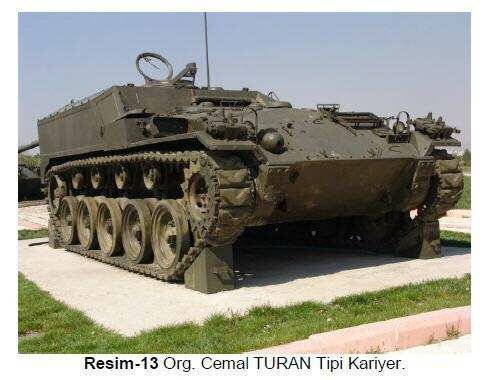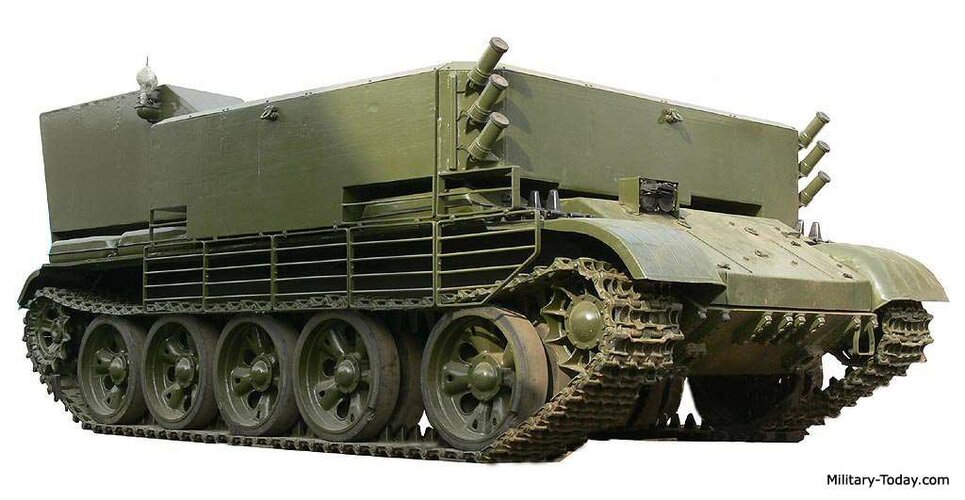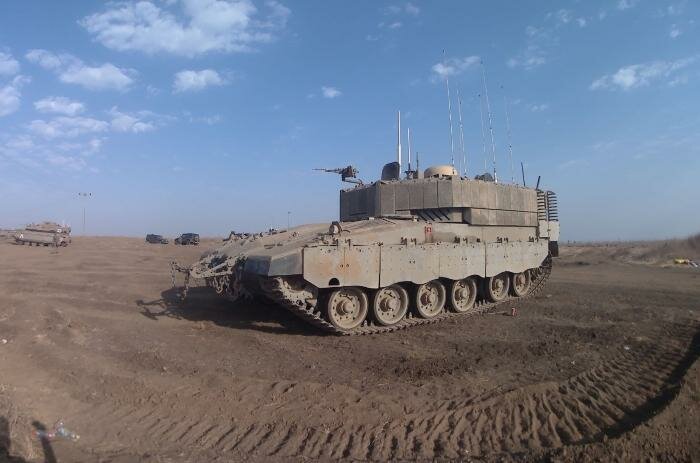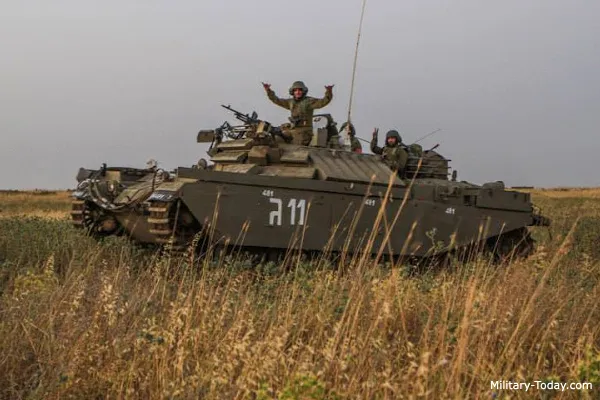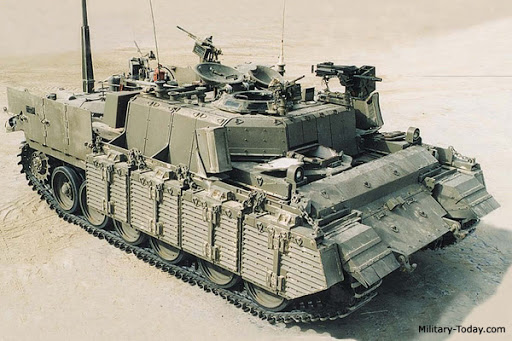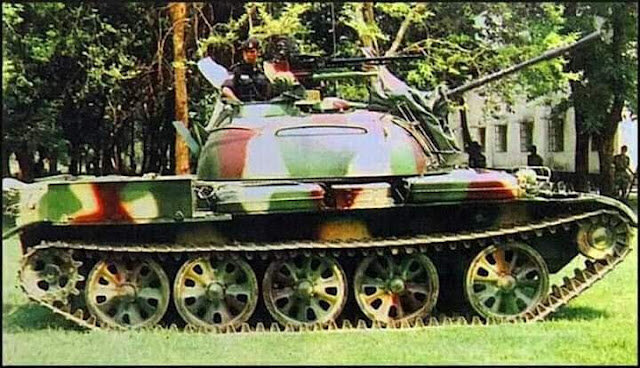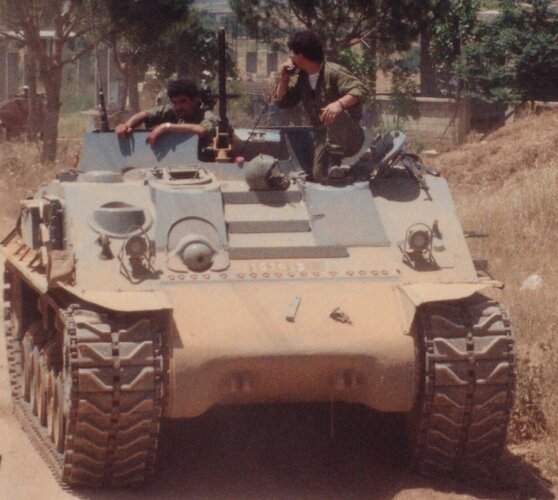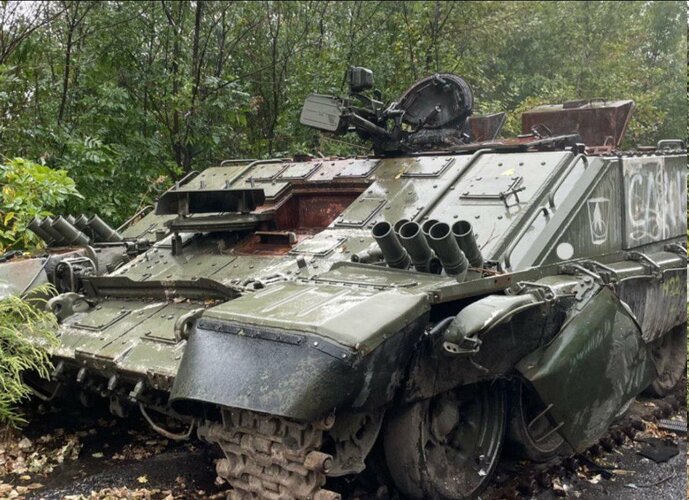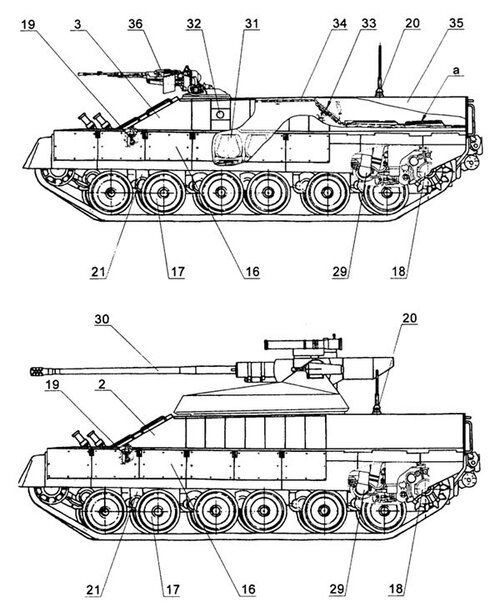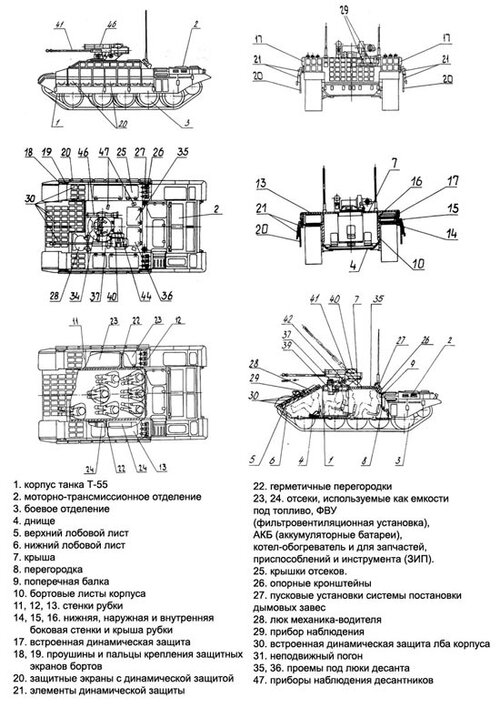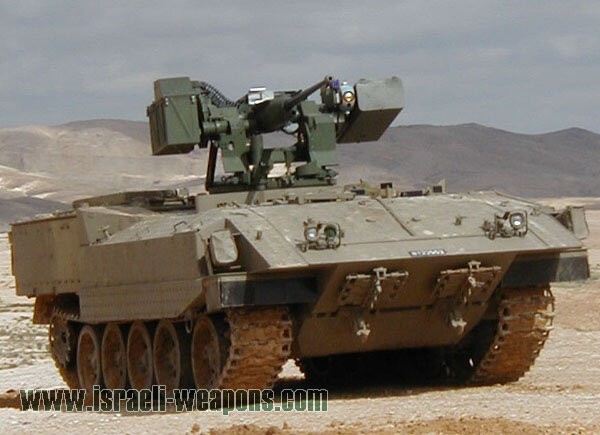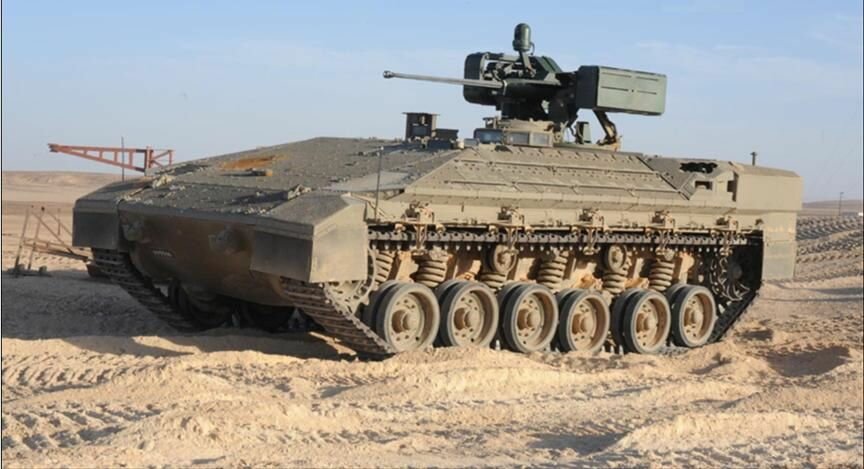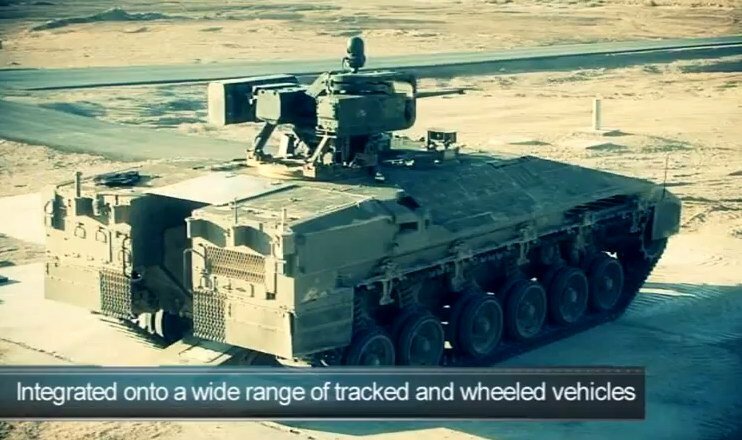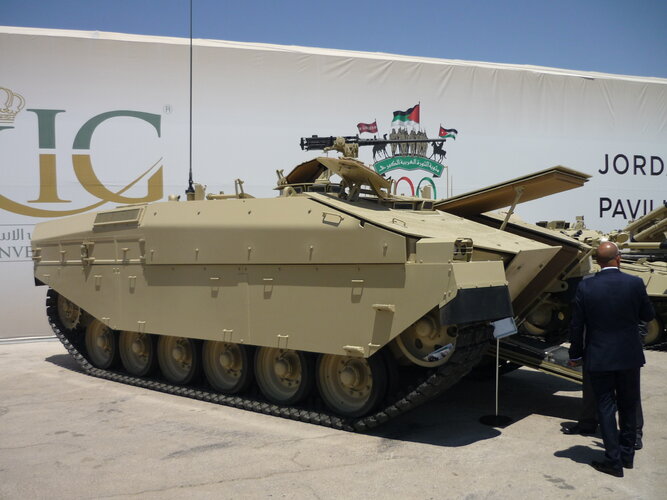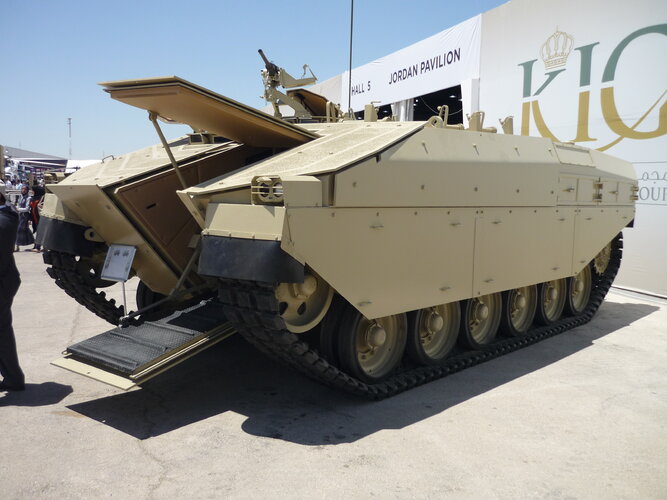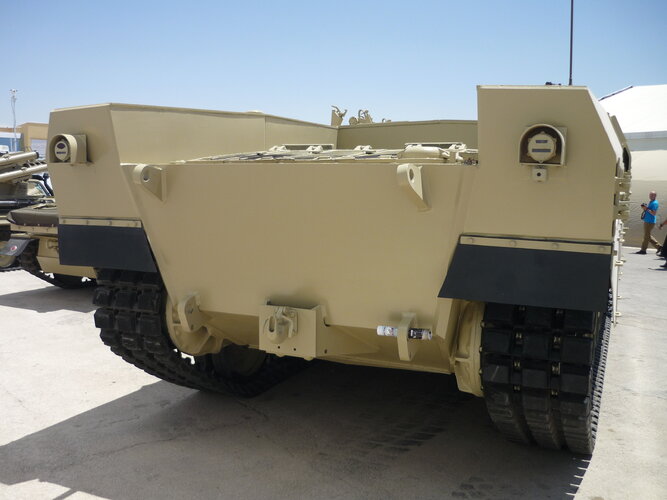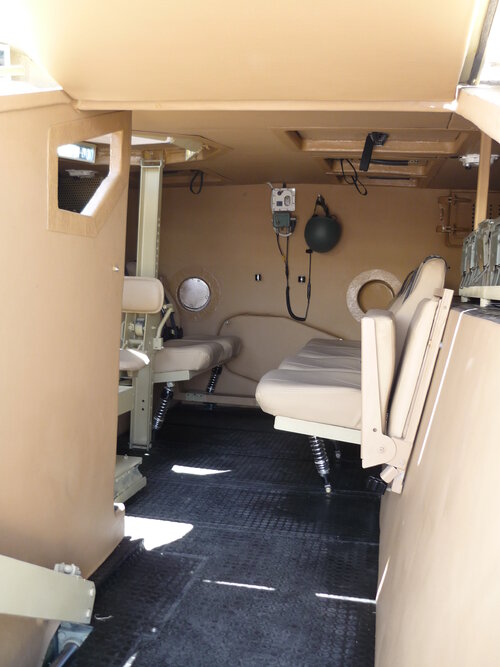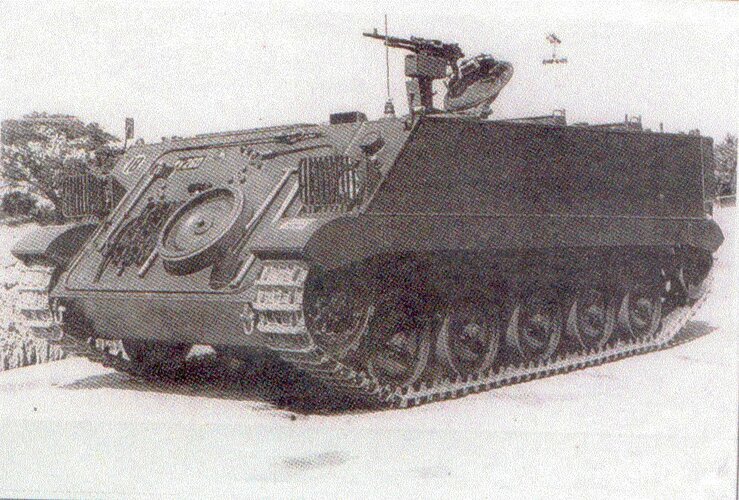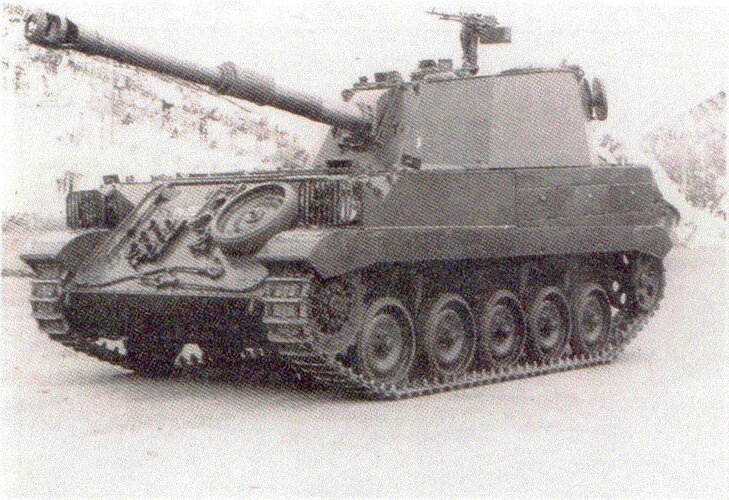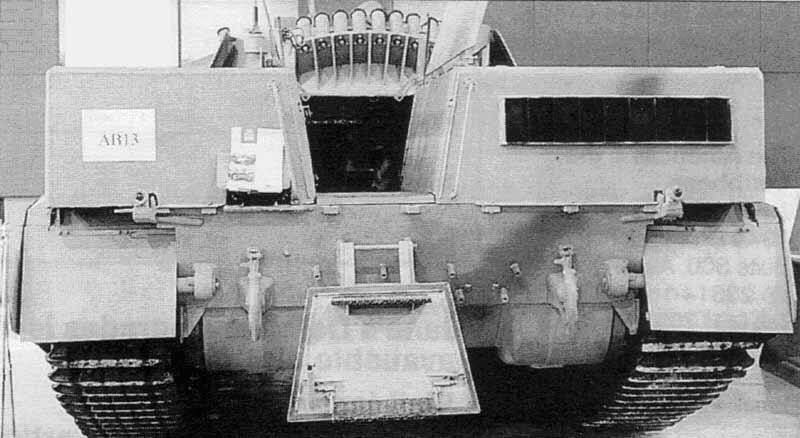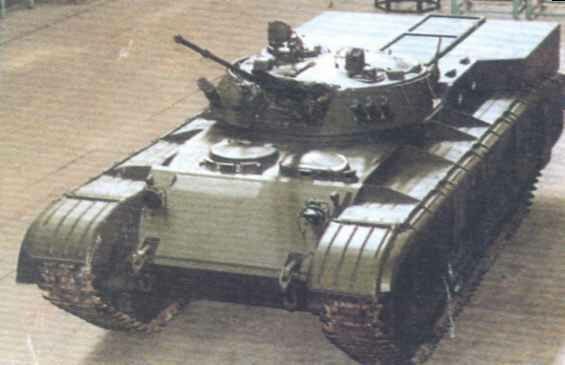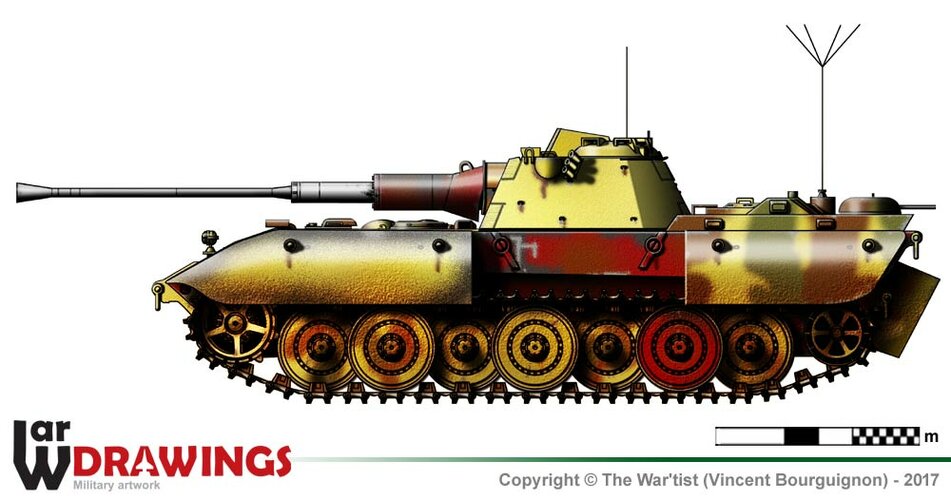You are using an out of date browser. It may not display this or other websites correctly.
You should upgrade or use an alternative browser.
You should upgrade or use an alternative browser.
Tanks converted to APCs?
- Thread starter riggerrob
- Start date
NamedUser_
ACCESS: Restricted
- Joined
- 31 March 2021
- Messages
- 18
- Reaction score
- 36
- Joined
- 25 July 2007
- Messages
- 4,299
- Reaction score
- 4,196
I guess you use what you've got but I'd love to see how "9-10 troops" are squeezed into this 'APC conversion'!
According to the caption on another view of this vehicle, it is also intended to act as an "armoured recce vehicle, infantry assault vehicle, etc." Assuming that the last refers to a fire-support role, I find this much more realistic than the 'APC' option.
According to the caption on another view of this vehicle, it is also intended to act as an "armoured recce vehicle, infantry assault vehicle, etc." Assuming that the last refers to a fire-support role, I find this much more realistic than the 'APC' option.
NamedUser_
ACCESS: Restricted
- Joined
- 31 March 2021
- Messages
- 18
- Reaction score
- 36
I've come with more tanks conversions so buckle up kiddos.

^
AMX-VCI (Véhicule de Combat d'Infanterie): A variant of the AMX-13 light tank that has seen the world over. Still in service with nine countries. Picture shows an Indonesian Army AMX-VCI.

^
Pansarbandvagn 301 (shortened to Pbv 301) was Sweden's premier APC for their mechanized infantry during the 60s and 70s until it was supplemented by the Pbv 302 and utterly being replaced by said Pbv 302. Chassis was the Stridsvagen m/41.

Lastly, while technically not a "tank" by most standards, I like to give a special mention to the Panhard EBR ETT (Engin Transport de Troupes). A unique APC version to the EBR family that only Portugal used. Unknown if it saw any combat and only 28 examples were ever built.
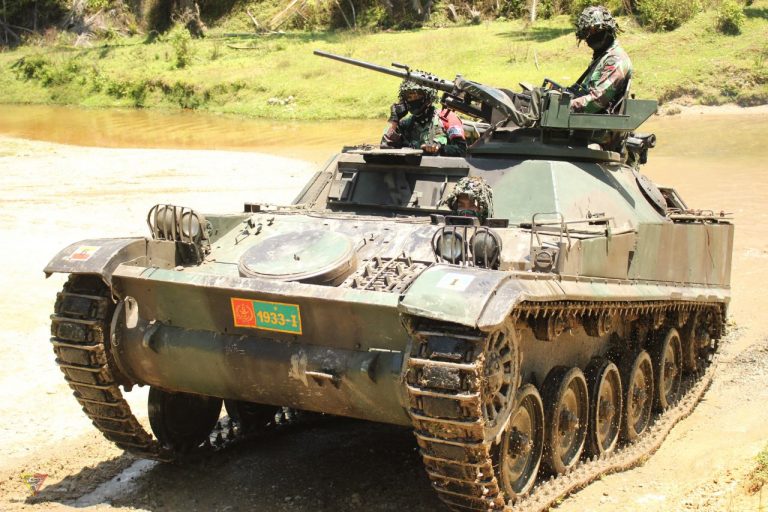
^
AMX-VCI (Véhicule de Combat d'Infanterie): A variant of the AMX-13 light tank that has seen the world over. Still in service with nine countries. Picture shows an Indonesian Army AMX-VCI.
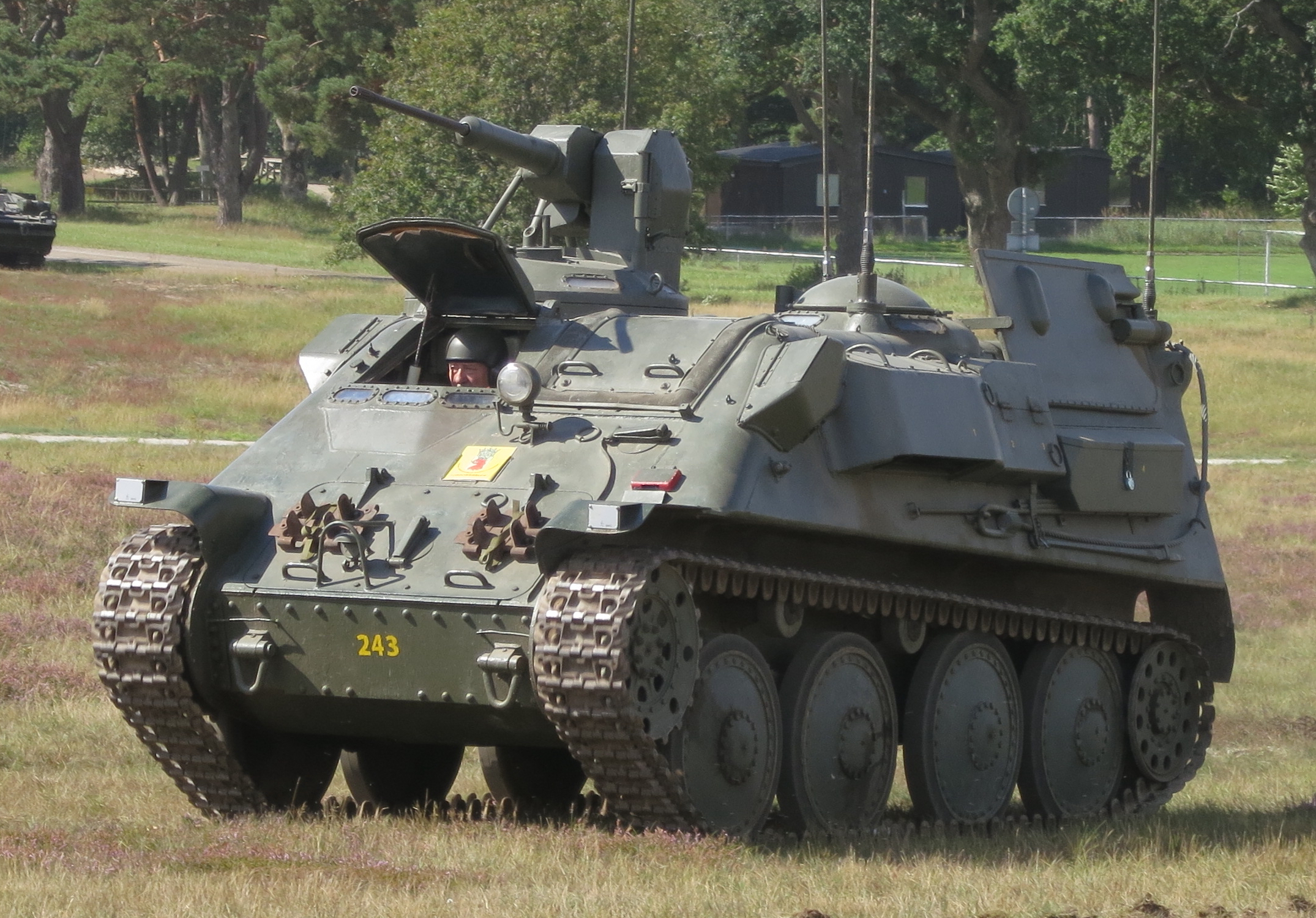
^
Pansarbandvagn 301 (shortened to Pbv 301) was Sweden's premier APC for their mechanized infantry during the 60s and 70s until it was supplemented by the Pbv 302 and utterly being replaced by said Pbv 302. Chassis was the Stridsvagen m/41.
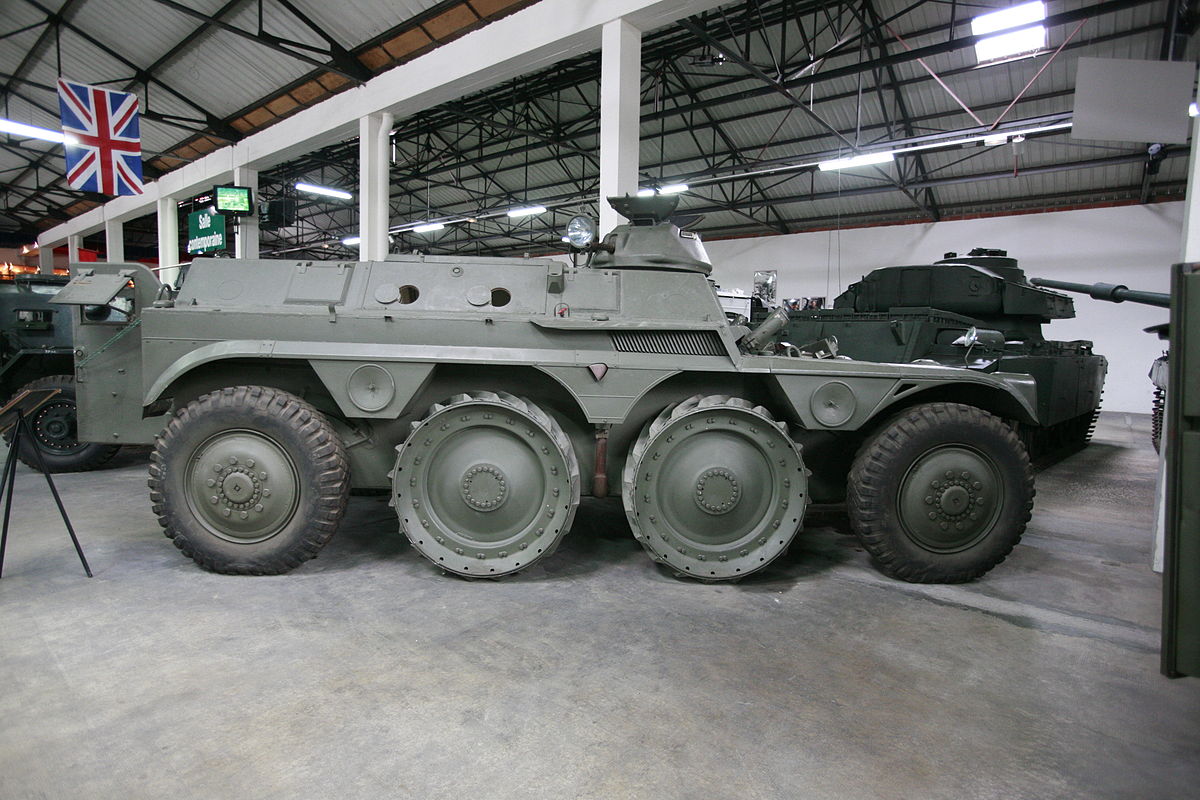
Lastly, while technically not a "tank" by most standards, I like to give a special mention to the Panhard EBR ETT (Engin Transport de Troupes). A unique APC version to the EBR family that only Portugal used. Unknown if it saw any combat and only 28 examples were ever built.
perttime
I really did change my personal text
- Joined
- 30 March 2013
- Messages
- 311
- Reaction score
- 318
As I recall from 1991, "turretless Shermans" were often reported when SLA was rotating personnel at their positions along the "Israeli Controlled Area" in the south of Lebanon. My usual job wasn't near those routes, so I'm not sure if I ever saw one myself.The South Lebanon Army of Major Haddad created some makeshift APCs out of T-54, -55 and even out of ex-IDF Shermans M50.Can anyone name any other turreted tank to APC conversions?
Those machines were very different from the IDF's Achzarit or Ambutanks:
(pics removed from quote)
We had to call SLA "De Facto Force", or DFF.
- Joined
- 27 September 2006
- Messages
- 6,417
- Reaction score
- 6,816
Also helped the West German Army get started on its armoured infantryThere was the M39 utility carrier (eg., APC) built on the M 18 chassis...
View attachment 651248
It was used late in WW 2 and extensively in Korea.
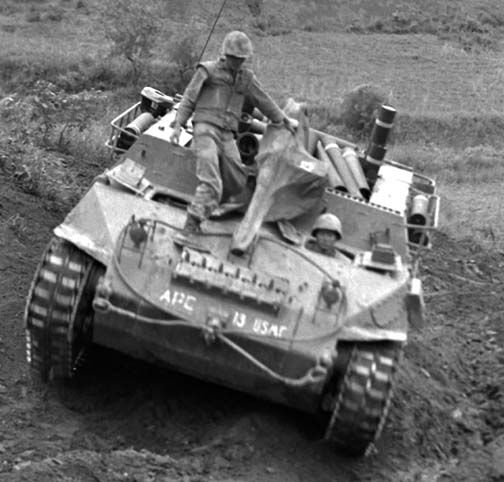
M39 armored utility vehicle - Wikipedia
- Joined
- 3 September 2006
- Messages
- 1,475
- Reaction score
- 1,471
Now you do.As I recall from 1991, "turretless Shermans" were often reported when SLA was rotating personnel at their positions along the "Israeli Controlled Area" in the south of Lebanon. My usual job wasn't near those routes, so I'm not sure if I ever saw one myself.
Attachments
T. A. Gardner
ACCESS: Top Secret
- Joined
- 18 February 2021
- Messages
- 1,152
- Reaction score
- 2,022
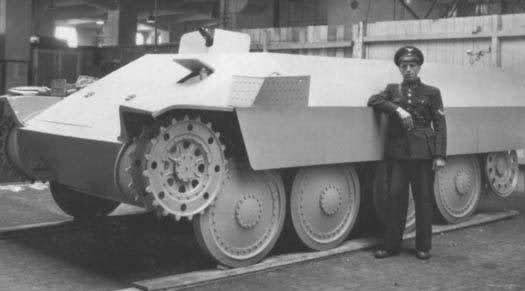
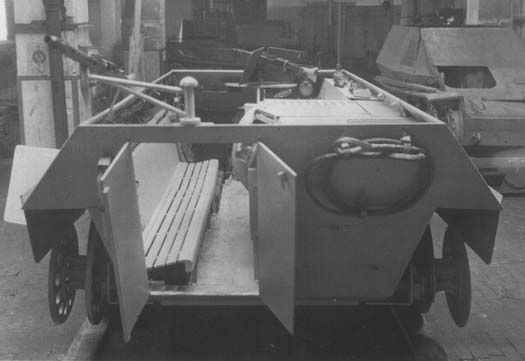
There's the Kätzchen APC of late 1944 on the Pz 38d chassis (yes, there was a d version that's different from the original t type. The Hetzer uses the d version too. And, no, I'm not sure what the two vehicles in the second picture behind the Kätzchen are...
- Joined
- 11 March 2012
- Messages
- 3,249
- Reaction score
- 3,179
Katzchen had an odd drive configuration with the engine mounted in the right rear corner and a diagonal drive shaft carrying power forward to a front drive axle.

There's the Kätzchen APC of late 1944 on the Pz 38d chassis (yes, there was a d version that's different from the original t type. The Hetzer uses the d version too. And, no, I'm not sure what the two vehicles in the second picture behind the Kätzchen are...
The Swedish Pbv. 301 started with the same hull, but used a new, flat marine engine mounted under the floor. Since the Pbv.301 engine was farther forward, it interfered less with infantry exiting the APC.
The Military Institute of Armored and Automotive Technology WITPiS in Sulejówek carried out conceptual work to build a vehicle called "Odyniec" (meaning Boar) based on the T-55 tanks withdrawn from the Polish Army. It was supposed to be a Heavy Armored Transporter, capable of carrying ten soldiers (including eight landing soldiers). "Odyniec" (Boar) was to be armed with a 12.7 mm machine gun, a 40 mm automatic grenade launcher and a 9M14 Malyutka ATGM launcher.


T. A. Gardner
ACCESS: Top Secret
- Joined
- 18 February 2021
- Messages
- 1,152
- Reaction score
- 2,022
Now for probably the most obscure APC on a tracked chassis ever...

The RAF converted two Cardin Loyd artillery tractors into tanks using bits from their Rolls Royce armored cars. These were prototypes to be tested for airfield defense. One got converted into an APC as you can see above.

That's the base vehicle they used.
Anyway, the tank and APC were sent to Iraq for testing (I assume to be out of sight of the Army who likely would have been angry the RAF was trying to get tanks on top of their getting airplanes).
These sat forgotten until WW 2 when Iraq revolted and they were drug out to serve as stationary pillboxes at an RAF airfield there. They were dubbed HMS Walrus and Seal (No, I don't know which was which).
So, the RAF had a prototype tracked APC pre-WW 2 in HMS Walrus or HMS Seal...
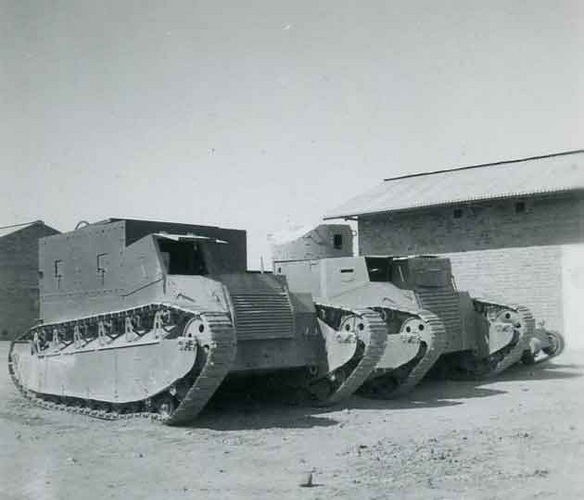
The RAF converted two Cardin Loyd artillery tractors into tanks using bits from their Rolls Royce armored cars. These were prototypes to be tested for airfield defense. One got converted into an APC as you can see above.
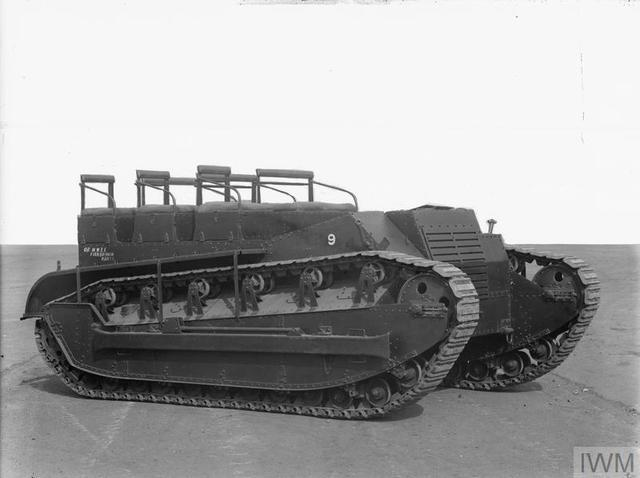
That's the base vehicle they used.
Anyway, the tank and APC were sent to Iraq for testing (I assume to be out of sight of the Army who likely would have been angry the RAF was trying to get tanks on top of their getting airplanes).
These sat forgotten until WW 2 when Iraq revolted and they were drug out to serve as stationary pillboxes at an RAF airfield there. They were dubbed HMS Walrus and Seal (No, I don't know which was which).
So, the RAF had a prototype tracked APC pre-WW 2 in HMS Walrus or HMS Seal...
- Joined
- 9 October 2009
- Messages
- 21,973
- Reaction score
- 13,620
The Battle of Habbaniya, aka the 'Second Battle of Britain', I presume.These sat forgotten until WW 2 when Iraq revolted and they were drug out to serve as stationary pillboxes at an RAF airfield there.
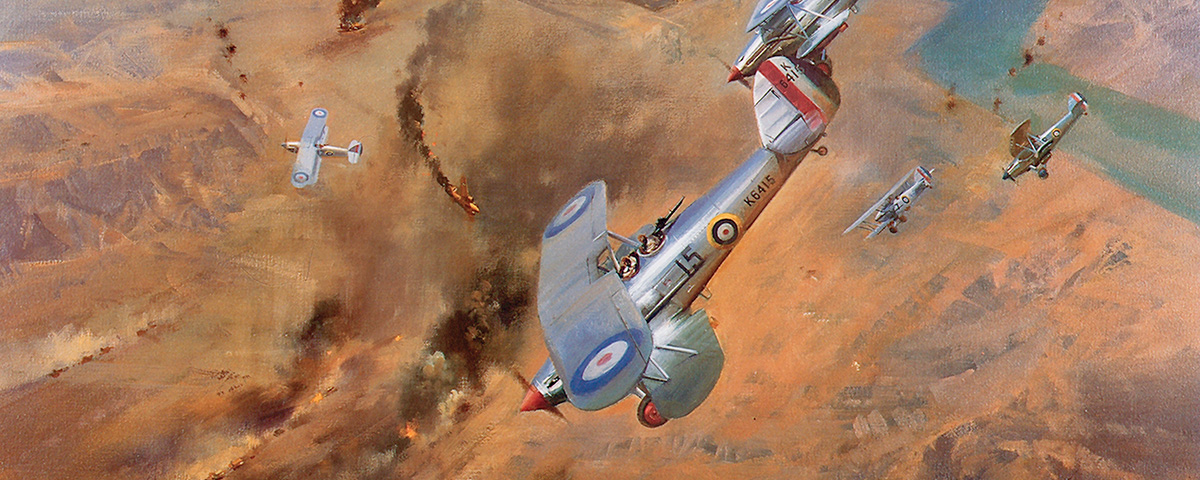
Air War Over Iraq: 1941
In May 1941, British forces were fighting to keep Iraq in Allied hands—a struggle that belatedly involved German and Italian aircraft as well.
prof12
ACCESS: Confidential
- Joined
- 4 December 2019
- Messages
- 50
- Reaction score
- 106
Andrei_bt
ACCESS: Confidential
- Joined
- 24 October 2009
- Messages
- 135
- Reaction score
- 222
Heavy armored fighting vehicle made on the basis of the chassis of the tank T-55 http://btvt.info/7english/afv55.htm Russian tank ifv projects http://btvt.info/4ourarticles/t_btr_russ.htm
Attachments
prof12
ACCESS: Confidential
- Joined
- 4 December 2019
- Messages
- 50
- Reaction score
- 106
Attachments
Last edited:
Turretless Stuarts were primarily used for recce'
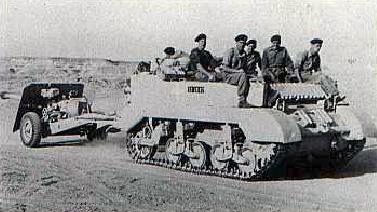
Or as gun tractors. Or to haul ammo and other supplies to exposed positions. Or to evacuate wounded who didn't need stretchers.
KADDB Al Dawsar Jordanian HAPC based on Centurion MBT (photos source: https://bmpd.livejournal.com/1909354.html)
Attachments
NamedUser_
ACCESS: Restricted
- Joined
- 31 March 2021
- Messages
- 18
- Reaction score
- 36
Now, I'm no military engineer but wouldn't have a troop door in the front cause massive number of causalities?KADDB Al Dawsar Jordanian HAPC based on Centurion MBT (photos source: https://bmpd.livejournal.com/1909354.html)
- Joined
- 9 October 2009
- Messages
- 21,973
- Reaction score
- 13,620
Likely intended for situations where they have to breach buildings in MOUT scenarios and the like.Now, I'm no military engineer but wouldn't have a troop door in the front cause massive number of causalities?
Same as the Israeli T55 based carrier. You pull up to a building, blast a hole and the troops de-bus, into the building.Likely intended for situations where they have to breach buildings in MOUT scenarios and the like.Now, I'm no military engineer but wouldn't have a troop door in the front cause massive number of causalities?
- Joined
- 16 April 2008
- Messages
- 9,605
- Reaction score
- 14,494
The Israeli Achzarit heavy APCs based on the T-55 have rear doors.Same as the Israeli T55 based carrier. You pull up to a building, blast a hole and the troops de-bus, into the building.Likely intended for situations where they have to breach buildings in MOUT scenarios and the like.Now, I'm no military engineer but wouldn't have a troop door in the front cause massive number of causalities?
There are reports of a small number of Centurion-based Nagmachon variants (maybe called Nagmapuma or Pilo) that have a front door.
Nakpadon Heavy Armored Personnel Carrier | Military-Today.com
The Nakpadon heavy armored personnel carrier is a conversion of the Centurion main battle tank.
www.military-today.com
Kat Tsun
eeeeeeeeeeeeeee
- Joined
- 16 June 2013
- Messages
- 1,371
- Reaction score
- 1,778
Likely intended for situations where they have to breach buildings in MOUT scenarios and the like.Now, I'm no military engineer but wouldn't have a troop door in the front cause massive number of causalities?
It's neither. It's not intended for serious production, much like the Falcon turret. Jordan is just showing off it has a "military industry" and seeking investments from outsiders, essentially. Morally, it's better than funneling the money into the royal family's stable of supercars, but practically I don't think there's much greater value for the money.
The door on the front is just because the Jordanians didn't want to do the hard thing and try to fit a transverse engine or accept a smaller engine. The Israelis made a functional APC for combat use, though, which necessitated replacing the engine and adding a troop...crawlspace? so that the men can exit. Conversely, this Jordanian thing is basically a body kit for an existing tank hull with a fresh coat of paint. Note that it still has the AVDS-1790 and Allison transmission of the M60A1 RISE, typical of the Tariq, rather than a newer engine like the Achzarit.
I suspect the Dawsar's relative success (four vehicles vice one) is because it's simply much less effort to make a Centurion into a front door APC than it is to do the hard thing and make a front engine APC with a more proper rear door as the Temsah was. Perhaps it only takes a quarter of the man-hours of labor to turn a Tariq into a Dawsar vice a Tariq into a Temsah?
- Joined
- 26 January 2011
- Messages
- 2,226
- Reaction score
- 645
The Jordanians have placed in production the Timsah, an MICV version of the Centurion which is reversed, with the troop compartment in the rear where the fighting compartment is, with an exit in the old front plate.


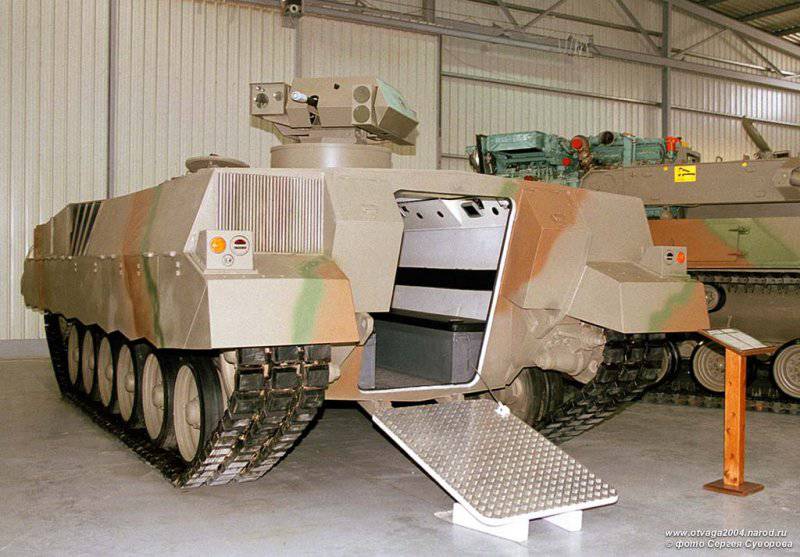
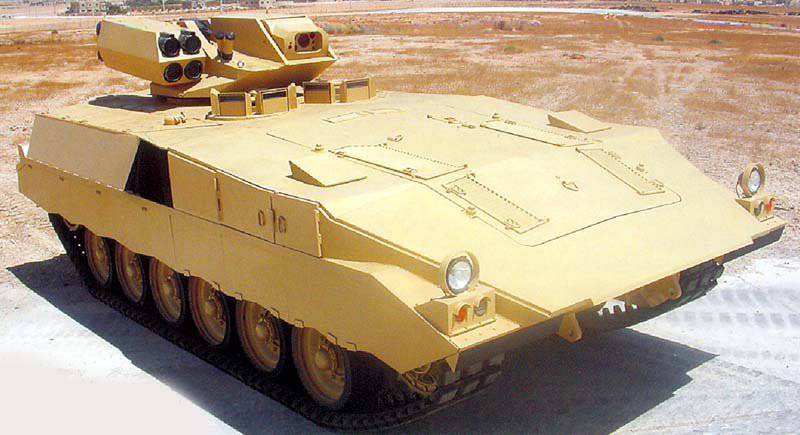
monochromelody
ACCESS: Confidential
- Joined
- 3 November 2015
- Messages
- 72
- Reaction score
- 204
prof12
ACCESS: Confidential
- Joined
- 4 December 2019
- Messages
- 50
- Reaction score
- 106
Renault YS
Renault YS4. Light armored personnel carrier. It was originally intended to equip sapper units of tank divisions. Accommodated the driver, commander and six paratroopers in the "wheelhouse". In the troop compartment with a smooth floor, there was enough space to place two machine guns, ammunition and ammunition. The troops left the DO through large double doors in the back of the hull. The speed of the car was 50 km / h, the cruising range was 220 km.



Renault YS4. Light armored personnel carrier. It was originally intended to equip sapper units of tank divisions. Accommodated the driver, commander and six paratroopers in the "wheelhouse". In the troop compartment with a smooth floor, there was enough space to place two machine guns, ammunition and ammunition. The troops left the DO through large double doors in the back of the hull. The speed of the car was 50 km / h, the cruising range was 220 km.
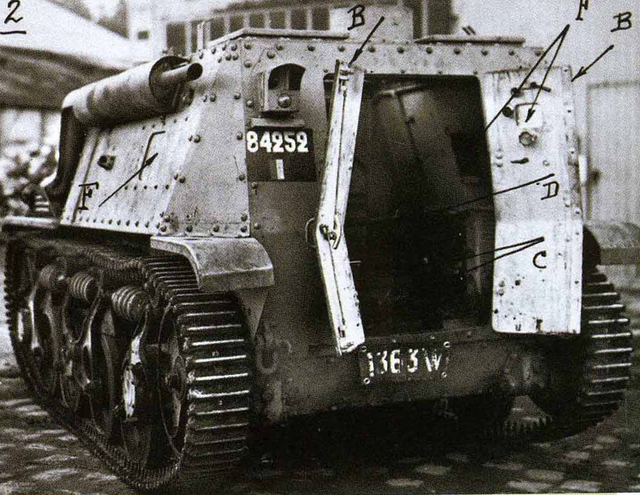
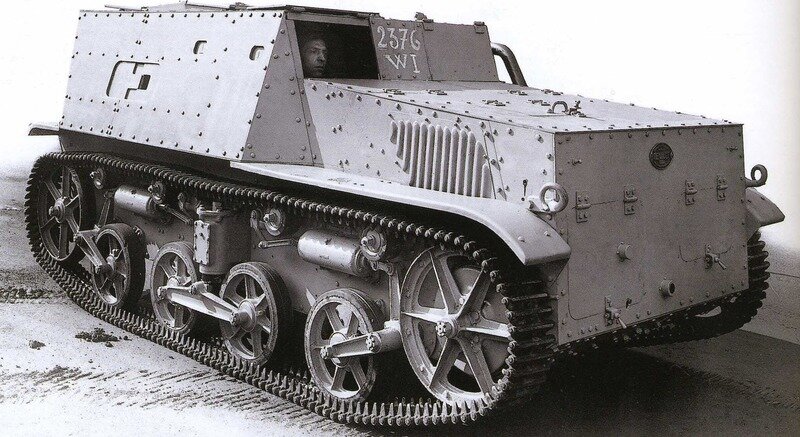
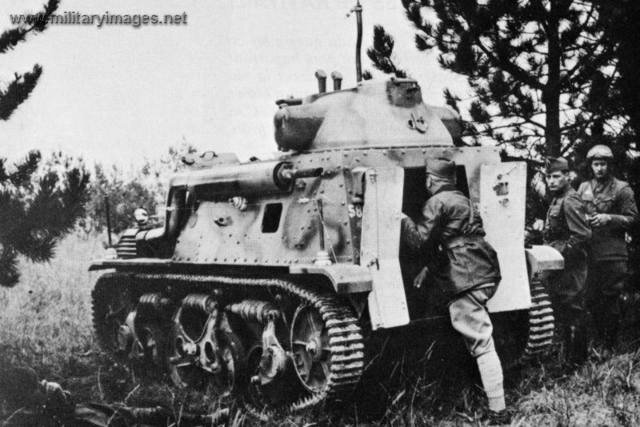
- Joined
- 3 September 2006
- Messages
- 1,475
- Reaction score
- 1,471
Thanks for the rare pics of this arcane subject.
AFAIK, the Renault YS 4 was for the "programme type M : voiture de commandement et de liaison blindés", ie command and liaison with armored units.
And by the way, I believe the vehicle with a turret in third picture is not a YS-4 but YS-2, for the programme type L : voiture de reconnaissance, ie recce.
AFAIK, the Renault YS 4 was for the "programme type M : voiture de commandement et de liaison blindés", ie command and liaison with armored units.
And by the way, I believe the vehicle with a turret in third picture is not a YS-4 but YS-2, for the programme type L : voiture de reconnaissance, ie recce.
So was the YS2 built on the chassis of the AMR 33? And the YS4, the AMR 35, with some elements from the R 35?
How many of each were built? Were the production lines still up as of May 1940?
Were these both for the Cavalry, i.e. mostly for the DLMs and DLCs?
How many of each were built? Were the production lines still up as of May 1940?
Were these both for the Cavalry, i.e. mostly for the DLMs and DLCs?
- Joined
- 3 September 2006
- Messages
- 1,475
- Reaction score
- 1,471
Solid information is scarce. To the best of my knowledge:
The YS were based on the AMR 35 chassis.
They were intended for Infantry, Cavalry and Artillery, as entries into the 1931 Army-wide "program for all-terrain vehicles" which spec'd 10 different types named K to T.
YS-1 was for type K: voiture blindée de transport de combattants (APC), YS-2 for type L: voiture de reco (recce), YS-4 for type M: voiture de commandement et de liaison blindés.
Renault also tendered 6x6 vehicles URK and URL for K and L, one each prototyped with wood representing armor. URM and URT planned, not built. Also 2 protos of YS-4 and 1 of YS-2 were built.
Not many orders came out of the program : AFAIK only the UE and UE2 were mass produced (~4,900).
[edit: not many orders before the defeat of June '40. As Prof12's post shows, under the Vichy régime orders came as of fall 1941]
But we are drifting off-topic: none of those were tanks converted to APC.
The YS were based on the AMR 35 chassis.
They were intended for Infantry, Cavalry and Artillery, as entries into the 1931 Army-wide "program for all-terrain vehicles" which spec'd 10 different types named K to T.
YS-1 was for type K: voiture blindée de transport de combattants (APC), YS-2 for type L: voiture de reco (recce), YS-4 for type M: voiture de commandement et de liaison blindés.
Renault also tendered 6x6 vehicles URK and URL for K and L, one each prototyped with wood representing armor. URM and URT planned, not built. Also 2 protos of YS-4 and 1 of YS-2 were built.
Not many orders came out of the program : AFAIK only the UE and UE2 were mass produced (~4,900).
[edit: not many orders before the defeat of June '40. As Prof12's post shows, under the Vichy régime orders came as of fall 1941]
But we are drifting off-topic: none of those were tanks converted to APC.
Last edited:
prof12
ACCESS: Confidential
- Joined
- 4 December 2019
- Messages
- 50
- Reaction score
- 106
Спасибо за редкие фото на эту загадочную тему.
Насколько мне известно, Renault YS 4 предназначался для «программы типа M: voiture de commandement et de liaison слепых», т.е. командования и связи с бронетанковыми подразделениями.
И, кстати, я считаю, что машина с башней на третьем фото - это не YS-4, а YS-2, для программы типа L: voiture de reconnaissance, т.е. рекогносцировка.
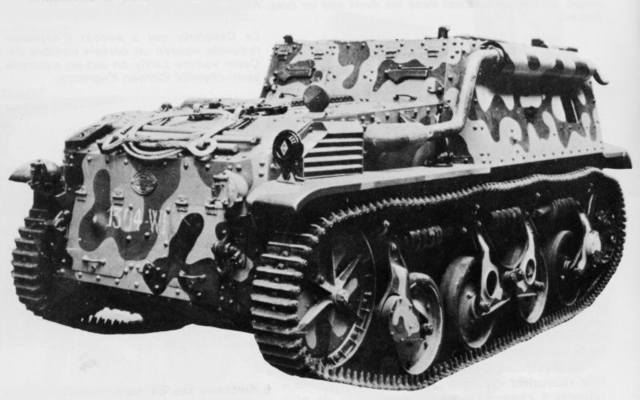
Легкий БТР Французского Государства – Renault YS
Идея создать машину наблюдения и связи для механизированных подразделений на базе кавалерийского AMR-33 родилась у французских военных в 1935 году. Проект получил название Renault YS и был реализован в 1936 году. Машина получила ходовую от танка AMR 35 и полностью переделанный корпус:…
 rroom.livejournal.com
rroom.livejournal.com
The vehicles were delivered to the reconnaissance and sapper companies of the tank and motorized units. Subsequently, Renault YS4s were issued to heavy weapons companies of motorized and infantry divisions for the transportation of heavy machine guns and battalion mortar crews. In addition, part of the vehicles entered the linear regiments of motorized units (one for half of the infantry squad). Soon, the troops began to equip the BRT with a V-shaped armored shield covering the course machine gun. The Renault company adequately accepted the rationalization "from below" and began to install a shield in the factory. For the purpose of unification, he received the shape of a truncated V.
prof12
ACCESS: Confidential
- Joined
- 4 December 2019
- Messages
- 50
- Reaction score
- 106
AB-13 infantry fighting vehicle - the first heavy infantry fighting vehicle
he engine compartment is located in the aft. Between this compartment and the tower is the troop compartment. For firing small arms, several embrasures are provided on the sides of the hull, which are combined with periscopes. In order to ensure a more or less trouble-free landing, the Ukrainian designers decided to make a continuous passage over the engine compartment, ending with aft hatches. The low height of the MTO is ensured by the installation of a Ukrainian turbocharged diesel engine 6TD or 5TDF, in which the cylinders are located horizontally
he engine compartment is located in the aft. Between this compartment and the tower is the troop compartment. For firing small arms, several embrasures are provided on the sides of the hull, which are combined with periscopes. In order to ensure a more or less trouble-free landing, the Ukrainian designers decided to make a continuous passage over the engine compartment, ending with aft hatches. The low height of the MTO is ensured by the installation of a Ukrainian turbocharged diesel engine 6TD or 5TDF, in which the cylinders are located horizontally
Attachments
prof12
ACCESS: Confidential
- Joined
- 4 December 2019
- Messages
- 50
- Reaction score
- 106
E-90 Bison Schützenpanzerwagen
APC variant with engine compartment moved in front in order to provide a rear compartment for the troop with an access door on the hull rear plate. This compartment had a small machine gun turret. This arrangement did not make it possible to retain the bulky turret of the standard E-90. It was replaced here by a Schmallturm (developed for the Panther Ausf.F) armed with a 55mm MK automatic gun.
Is however a hoax (as the E-90) designed for the Japanese simulation game "Panzer Front" of 1999, and not a true paper project, one day conceived by a German engineer during WW2.
APC variant with engine compartment moved in front in order to provide a rear compartment for the troop with an access door on the hull rear plate. This compartment had a small machine gun turret. This arrangement did not make it possible to retain the bulky turret of the standard E-90. It was replaced here by a Schmallturm (developed for the Panther Ausf.F) armed with a 55mm MK automatic gun.
Is however a hoax (as the E-90) designed for the Japanese simulation game "Panzer Front" of 1999, and not a true paper project, one day conceived by a German engineer during WW2.
Attachments
The YS were based on the AMR 35 chassis.
From the available photos, it appears that the shock absorber types and positions of the YS4 do match those of the AMR 35, but those of the YS2 are a better match to the AMR 33 or possibly the 34. Noting though that the turret shown in one YS 4 photo seems possibly to be related to that of the H35.
Were these both for the Cavalry, i.e. mostly for the DLMs and DLCs?
They were intended for Infantry, Cavalry and Artillery, as entries into the 1931 Army-wide "program for all-terrain vehicles" which spec'd 10 different types named K to T. (...) Not many orders came out of the program : AFAIK only the UE and UE2 were mass produced (~4,900).
[edit: not many orders before the defeat of June '40. As Prof12's post shows, under the Vichy régime orders came as of fall 1941]
The vehicles were delivered to the reconnaissance and sapper companies of the tank and motorized units. Subsequently, Renault YS4s were issued to heavy weapons companies of motorized and infantry divisions for the transportation of heavy machine guns and battalion mortar crews.
I asked because the 1930s French Army was notable for the lack of vehicle and weapon design/purchasing coordination between the Cavalry and Infantry. So learning of an APC design that was designed for use by both, and at least discussed for purchase by both...even if in the end it didn't happen...is of particular interest.
I think we know that the Cavalry was in the process of placing an order with Lorraine for the 39L APC, evolved from the 37L full-track tank-logistics vehicle and the clunky 38L APC-with-trailer. My understanding for that order is that the 37L production run had finished and its production line at Lorraine had been converted to run the 39L, waiting only for the receipt of the formal purchase order. AFAIK the 39L was not going to be ordered by the Infantry. I'm wondering now if 39Ls were intended to supplement the YS4s in Cavalry divisions, i.e. DLC and DLM, or to replace them. That's off-point for this thread, of course, since the Lorraine designs were not tank evolutions.
- Joined
- 3 September 2006
- Messages
- 1,475
- Reaction score
- 1,471
To my understanding, the 39L was going to be ordered in summer 1940, whereas the YS were not ordered in significant numbers before fall 1941. And the YS-4 were command vehicles, not APCs.I'm wondering now if 39Ls were intended to supplement the YS4s in Cavalry divisions, i.e. DLC and DLM, or to replace them.
My guess is that Vichy had to switch to the YS vehicles because 1) Alsace-Lorraine was annexed by Germany hence was no longer "French" to order from, and 2) the Nazis were commandeering all 37L 38L etc for their Beutepanzer program.
The EBR family of 8x8 wheeled vehicles was directly descended from the 1939-40 Panhard 201 8x8 wheeled light tank, which got only as far as the field-test-prototype stage before the 1940 hostilities began. The family resemblance is apparent:
Lastly, while technically not a "tank" by most standards, I like to give a special mention to the Panhard EBR ETT (Engin Transport de Troupes). A unique APC version to the EBR family that only Portugal used. Unknown if it saw any combat and only 28 examples were ever built.
EBR 75:
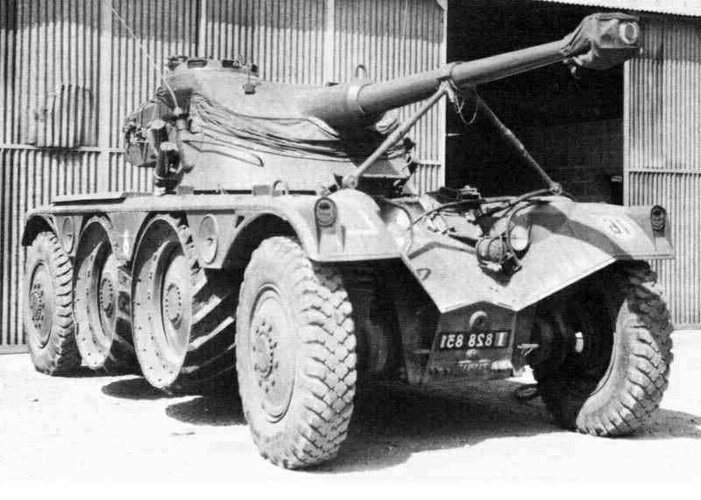
Panhard 201:
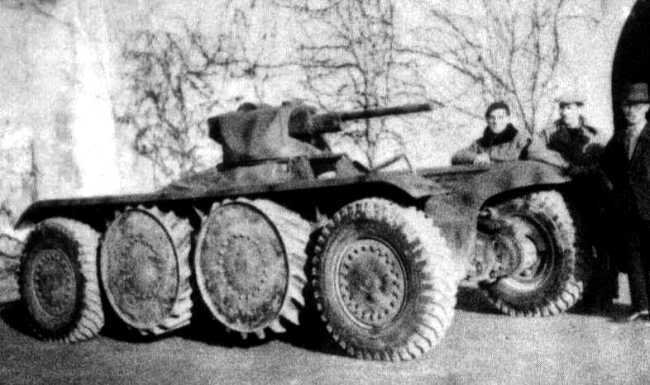
Panhard is said to have planned a next version of the 201 with sufficient scaling-up of the turret to mount a 47mm gun, thereby making the 201 as capable of anti-tank fire as the best 1940 French tanks, and therefore de facto a wheeled light tank for the Cavalry branch; and a corresponding scaling-up of the hull, to fit that larger turret.
Panhard also is said to have planned a Cavalry personnel carrier version of the successor-to-201 vehicle...the same concept that after the war became the EBR ETT.

